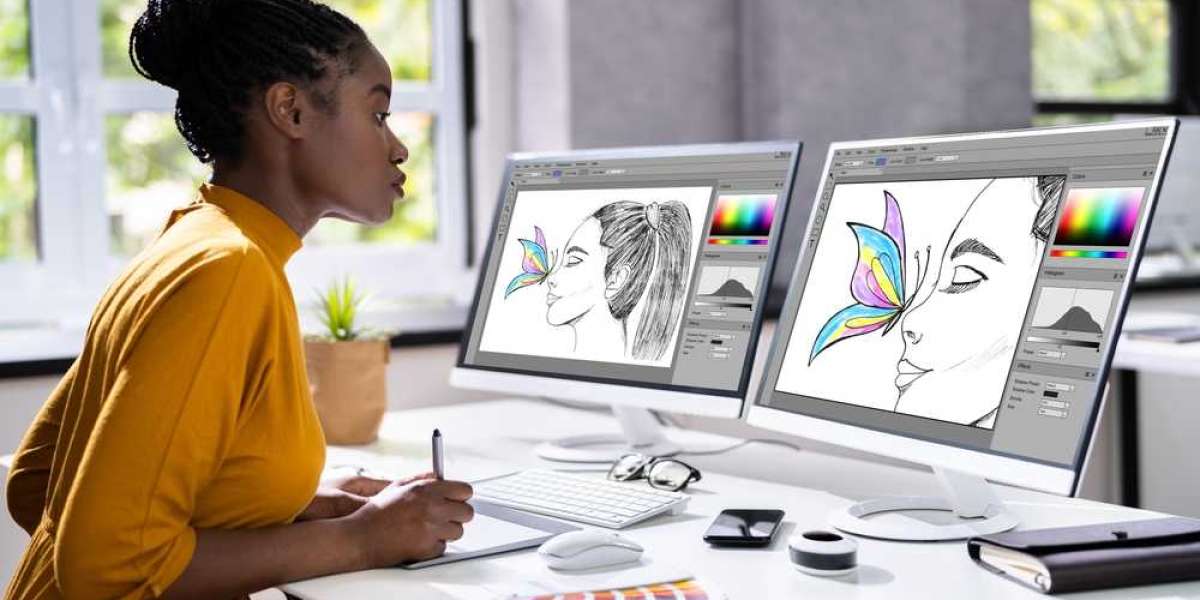The whir of an embroidery machine stitching out a perfect logo might seem like magic, but the real wizardry happens long before the needle touches the fabric. Welcome to the world of digitized embroidery designs - where ancient craft meets cutting-edge technology to create something entirely new. This isn't your grandmother's embroidery. Today's digitized embroidery designs have transformed what's possible with needle and thread, opening doors to precision, complexity, and creativity that hand embroidery could never achieve.
The Digital Revolution in Thread Art
Embroidery digitizing has done for needlework what word processors did for typing. Where traditional embroidery required painstaking hand-stitching, digitized designs let machines execute complex patterns with machine-like precision (because they are machines). But don't mistake this for losing the human touch - if anything, digitizing adds more creative possibilities while removing technical limitations.
The process starts with converting artwork into a digital embroidery file that tells the machine exactly where to place each stitch, what color thread to use, and in what order. This file becomes the DNA of your embroidered piece, containing all the instructions needed to recreate your vision in thread.
Why Digitized Designs Changed Everything
Before digitizing, creating consistent embroidered items was slow, expensive work. Imagine trying to produce 500 identical company polo shirts by hand - the variations would be noticeable. Digitization brought three game-changing benefits:
- Precision Repeatability - The same design stitches out identically every single time
- Complexity Made Simple - Intricate patterns that would take days by hand complete in minutes
- Creative Freedom - Effects like 3D puff, intricate fills, and photorealistic shading become possible
Suddenly, businesses could brand uniforms with pixel-perfect logos. Artists could experiment with thread like never before. Hobbyists could achieve professional-looking results without years of practice.
The Hidden Artistry Behind the Stitches
While machines do the physical stitching, creating the digital design file remains deeply creative work. A skilled digitizer makes hundreds of artistic decisions:
- Choosing stitch types (satin for shine, fill for coverage, running for detail)
- Mapping stitch directions to create texture and movement
- Balancing density so designs lie flat without puckering
- Sequencing colors and sections for optimal flow
- Adding underlay stitches for stability
It's like being both an architect and conductor - planning the structure while orchestrating how all the elements work together.
Unexpected Industries Transformed
Digitized embroidery has quietly revolutionized fields far beyond fashion:
Corporate Branding
- Consistent logos on thousands of uniforms
- Detailed embroidery replacing printed promotional items
- High-end branded merchandise with premium feel
Sports Teams
- Durable, detailed player names and numbers
- Team logos that withstand constant washing
- Custom designs for fans and merchandise
Interior Design
- Custom embroidered wall art
- Luxury home textiles with intricate patterns
- Personalized bedding and drapery
Automotive Aviation
- Durable branded seat stitching
- Custom interior detailing
- High-end trim and accents
The Technology Behind the Thread
Modern embroidery digitizing software offers tools that would make traditional embroiderers' heads spin:
- Stitch Simulation - Preview exactly how designs will stitch out
- Automatic Punching - AI-assisted digitizing for faster workflows
- 3D Visualization - See how designs will look on finished products
- Material Adaptation - Adjust for different fabrics automatically
Programs like Wilcom, Pulse, and Hatch have become the Photoshop of embroidery, packed with specialized tools for thread-based artistry.
DIY Digitizing: Pros and Cons
With more accessible software available, many crafters try digitizing themselves. While rewarding, it's worth understanding the challenges:
The Upside
- Complete creative control
- No per-design fees
- Satisfaction of creating from scratch
The Reality Check
- Steep learning curve
- Hours spent perfecting single designs
- Trial-and-error with materials
For many, the sweet spot is creating simple designs themselves while leaving complex projects to professionals.
Quality Differences That Matter
Not all digitized designs are created equal. Telltale signs of quality include:
✔ Smooth, consistent satin stitches
✔ Proper stitch density for the fabric
✔ Clean transitions between colors
✔ Minimal jumps between sections
✔ Appropriate underlay for stability
Poor digitizing shows in puckered fabric, broken threads, and designs that look "off" even when stitched correctly.
The Future Stitched In Thread
Where is digitized embroidery heading next? Exciting developments include:
- Augmented Reality Integration - Preview designs on actual garments via smartphone
- Smart Materials - Threads that change color or properties
- AI-Assisted Design - Instant conversion of photos to optimized embroidery files
- Sustainable Practices - Biodegradable threads and backing materials
Yet through all these advances, the core appeal remains - that special texture and dimensionality only embroidery can provide.
Getting Started With Digitized Embroidery
Ready to explore this reinvented craft? Here's how to begin:
- Start Simple - Choose basic designs to understand how stitches work
- Learn the Software - Many programs offer free trials
- Experiment Freely - Test different fabrics and stabilizers
- Study Quality Examples - Notice how professionals solve design challenges
- Join Communities - Online forums are goldmines of shared knowledge
The Takeaway
Digitized embroidery designs haven't just modernized an ancient craft - they've created an entirely new art form blending technology and tradition. What began as a way to automate simple patterns has blossomed into a medium with its own unique possibilities and expressions.
From hyper-detailed portraits in thread to bold graphic designs that pop off fabric, today's embroidery knows few limits. The machines may be digital, but the magic happens when those precise stitches come together to create something with soul - proof that even in our high-tech world, there's still nothing quite like the texture and warmth of thread art.
Whether you're a business looking to elevate your branding, an artist exploring new mediums, or a crafter wanting to expand your skills, digitized embroidery designs offer creative possibilities that are quite literally woven into the fabric of modern making. The question isn't whether to try this reinvented craft - it's what you'll create first.








